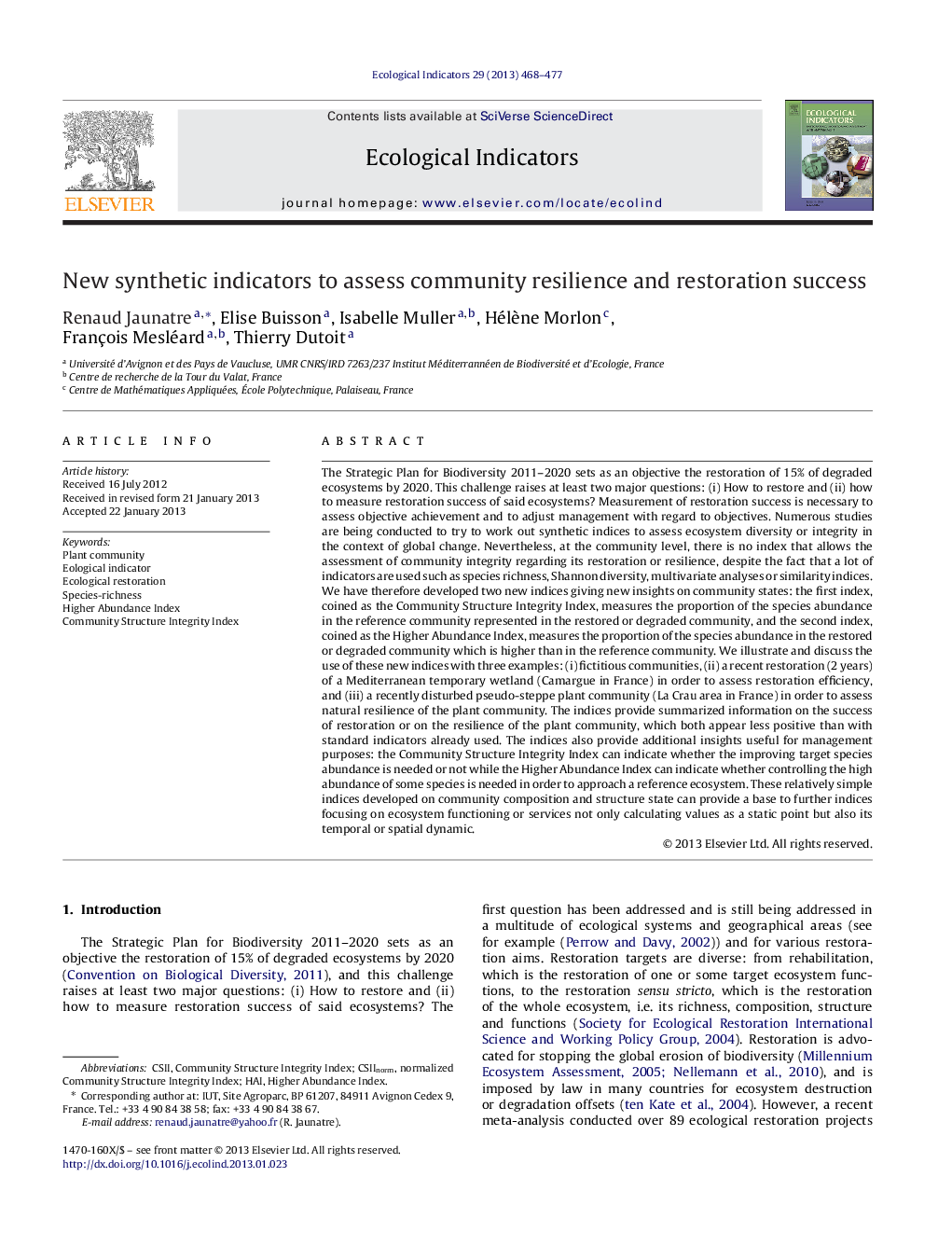| Article ID | Journal | Published Year | Pages | File Type |
|---|---|---|---|---|
| 4373502 | Ecological Indicators | 2013 | 10 Pages |
The Strategic Plan for Biodiversity 2011–2020 sets as an objective the restoration of 15% of degraded ecosystems by 2020. This challenge raises at least two major questions: (i) How to restore and (ii) how to measure restoration success of said ecosystems? Measurement of restoration success is necessary to assess objective achievement and to adjust management with regard to objectives. Numerous studies are being conducted to try to work out synthetic indices to assess ecosystem diversity or integrity in the context of global change. Nevertheless, at the community level, there is no index that allows the assessment of community integrity regarding its restoration or resilience, despite the fact that a lot of indicators are used such as species richness, Shannon diversity, multivariate analyses or similarity indices. We have therefore developed two new indices giving new insights on community states: the first index, coined as the Community Structure Integrity Index, measures the proportion of the species abundance in the reference community represented in the restored or degraded community, and the second index, coined as the Higher Abundance Index, measures the proportion of the species abundance in the restored or degraded community which is higher than in the reference community. We illustrate and discuss the use of these new indices with three examples: (i) fictitious communities, (ii) a recent restoration (2 years) of a Mediterranean temporary wetland (Camargue in France) in order to assess restoration efficiency, and (iii) a recently disturbed pseudo-steppe plant community (La Crau area in France) in order to assess natural resilience of the plant community. The indices provide summarized information on the success of restoration or on the resilience of the plant community, which both appear less positive than with standard indicators already used. The indices also provide additional insights useful for management purposes: the Community Structure Integrity Index can indicate whether the improving target species abundance is needed or not while the Higher Abundance Index can indicate whether controlling the high abundance of some species is needed in order to approach a reference ecosystem. These relatively simple indices developed on community composition and structure state can provide a base to further indices focusing on ecosystem functioning or services not only calculating values as a static point but also its temporal or spatial dynamic.
Graphical abstractFigure optionsDownload full-size imageDownload as PowerPoint slideHighlights► We have developed two indices to measure community resilience or restoration success. ► They separate either lower or higher abundances compared to a reference community. ► We have illustrated their use with applications on restoration and resilience. ► We have discussed their applications in conservation biology and as well as their limits.
